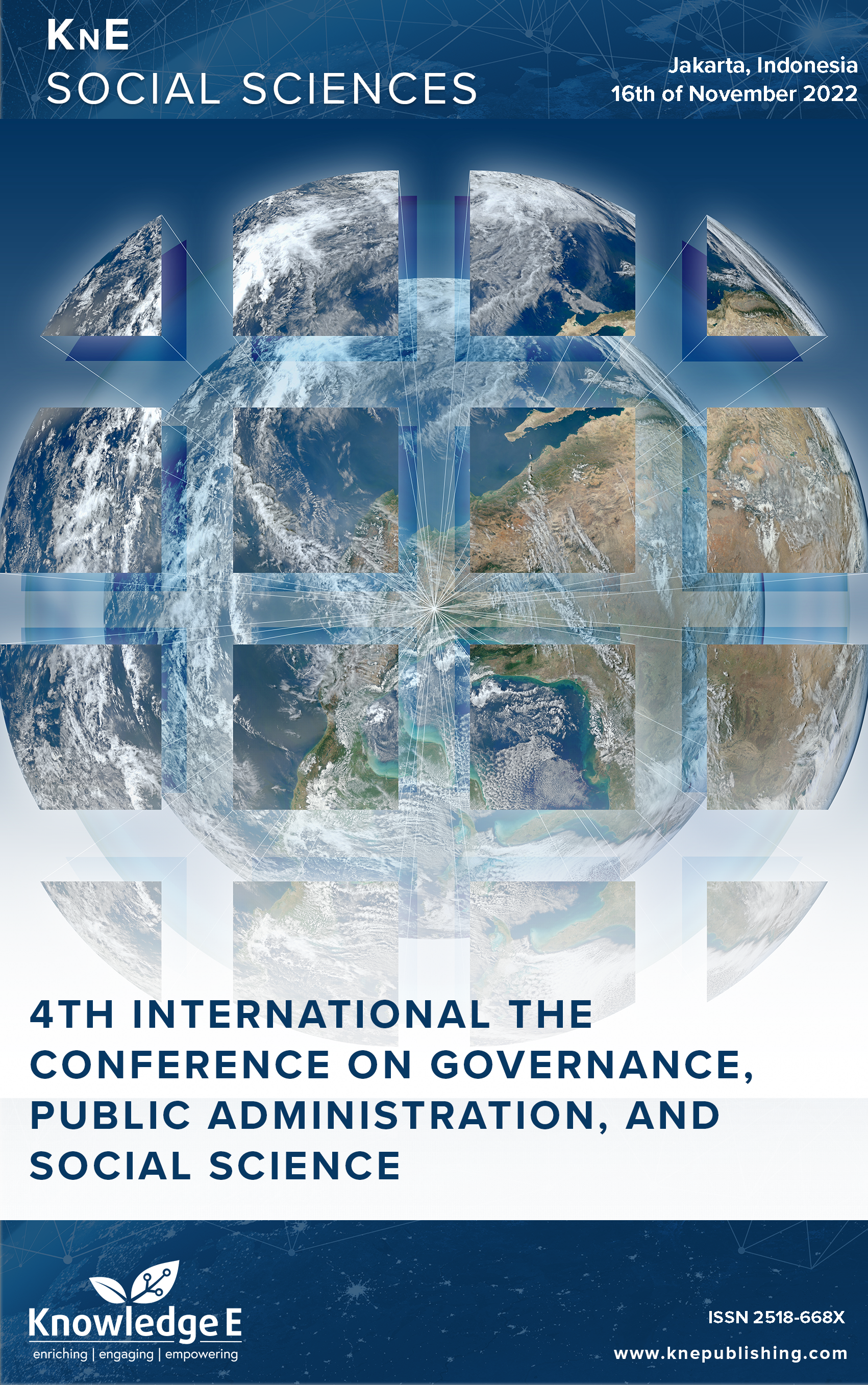The Role of e-Government to Improve the Implementation of Merit System in Indonesian Local Goverments
DOI:
https://doi.org/10.18502/kss.v8i11.13570Abstract
Digitalization has had an impact on changing various aspects of life, including the public sector. One of the adoptions of the use of information technology is carried out in the management of civil servants. This study aims to determine the role of e-government in improving the merit system in local government, with the locus of research in the Bali provincial government. This research uses a qualitative approach. The collection was conducted through interviews with the provincial governments of Bali, Indonesia, and studies of related documents. The results showed that the implementation of digital governance can improve the implementation of the merit system in local governments in Indonesia. The procurement of civil servants through an online selection mechanism has proven to cut the gap in the occurrence of nepotism in the procurement of civil servants. The quality of civil servants selected through the online selection mechanism is considered more competent. Information technology-based performance appraisals also make performance appraisals more transparent. The information technology-based competency development mechanism provides wider opportunities for employees to participate in competency development. Evaluation of competency development can be carried out directly by agencies through information technology. The personnel management information system, based on information technology, helps the implementation of the merit system. Through the integration of data and staffing processes, civil servant management based on the merit system is easier to do.
Keywords: digitalization, digital governance, meritocrarcy, e-government
References
[2] Bijker WE. Of bicycles, bakelites, and bulbs: Toward a theory of sociotechnical change. Massachusetts: MIT Press; 1995.
[3] Campbell JL. Institutional analysis and the role of ideas in political economy. Theory Soc. 1998;27(3):377–409.
[4] Campbell JL. Institutional change and globalization. Princeton: Princeton University Press; 2004. https://doi.org/10.1515/9780691216348
[5] Castells M. The rise of the network society. 2nd ed. Malden: Blackwell Publishing; 2000.
[6] Choi T, Chandler SM. Knowledge vacuum: An organisational learning dynamic of how e-government innovations fail. Gov Inf Q. 2020;37(1):101416.
[7] Danziger JN, Dutton WH, Kling R, Kraemer KL. Computers and politics: High technology in American local governments. New York: Columbia University Press; 1982.
[8] Fenton A, Fletcher G, Griffiths M, editors. Strategic digital transformation: A resultsdriven approach. Routledge; 2019. https://doi.org/10.4324/9780429020469
[9] Gao X, Lee J. E-government services and social media adoption: experience of small local governments in Nebraska state. Gov Inf Q. 2017;34(4):627–634.
[10] Giddens A. The constitution of society: Outline of the theory of structuration. Cambridge: Polity Press; 1984.
[11] Hutchby I. Conversation and technology: From the telephone to the internet. Cambridge: Polity Press; 2001.
[12] Kettl DF. The job of government: Interweaving public functions and private hands. Public Adm Rev. 2015;75(2):219–229.
[13] Leignel JL, Ungaro T, Staar A. Digital transformation: Information system governance. John Wiley & Sons; 2016. https://doi.org/10.1002/9781119377986
[14] March JG, Olsen JP. Elaborating the “New institutionalism”. In: Rhodes RA, Binder SA, Rockman BA, editors. The Oxford Handbook of political institutions. Oxford: Oxford University Press; 2006.
[15] Schlæger J. Digital governance and institutional change: Examining the role of e-government in China’s coal sector. Policy Internet. 2010;2(1):3. Available from: http://www.psocommons.org/policyandinternet/vol2/iss1/art3
[16] Seifert JW, Chung J. Using e-government to reinforce government citizen relationships: comparing government reform in the United States and China. Soc Sci Comput Rev. 2009;27(3):3–23.
[17] Sundberg L. Electronic government: Towards e-democracy or democracy at risk? Saf Sci. 2019;118:22–32.
[18] Twizeyimana JD, Andersson A. The public value of E-Government–A literature review. Gov Inf Q. 2019;36(2):167–78.
[19] Legislation Number 5 Year 2014 about Civil Servant (UU ASN)
[20] Legislation Number 9 Year 2015 about Amandements to Law Number 23 on Local Government

